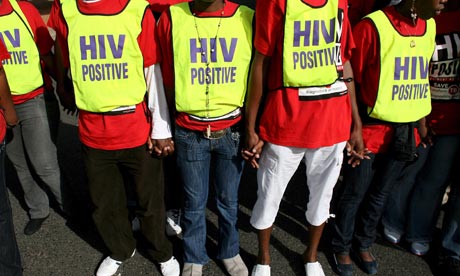
There are few global issues more urgent or devastating than the toll of HIV and Aids in Africa. Sub-Saharan Africa has 10% of the world's population but is home to 70% of those living with HIV and Aids. The problem is neither beaten nor going away: new infections continue to outpace the number of people put on treatment. Across Africa, the disease is estimated to have reduced average national growth rates by 2-4 percentage points a year.
One of the biggest impediments to the fight is the incorrect perception in developed nations that the epidemic is beaten. Thanks to donor fatigue and tougher economic conditions, many donor countries have reduced their contributions significantly. This puts at risk recent progress, which has been dramatic across many areas: in the stunning expansion of treatment (although universal treatment remains out of reach), in the reduction of mother-to-child transmission, and in the identification of male circumcision as an effective prevention tool.
But the scarcity of resources only puts even more emphasis on doing the most good with the money spent. This is the subject of a new book, RethinkHIV, which I edited. It presents the results of the first comprehensive attempt to use cost-benefit analysis to help identify the best interventions to fight HIV across sub-Saharan Africa.
A collaboration between the Rush Foundation and the Copenhagen Consensus Centre (CCC), the project saw teams of some of the world's top HIV economists, along with epidemiologists and demographers, examine the costs and benefits of different ways that additional funds could be spent.
Cost-benefit analysis is much maligned for being all about bean counting. But this approach, which the CCC has long advocated in areas from civil war to healthcare, can provide valuable insights. This is especially true in an area such as HIV, where billions of pounds have been spent by donors, often with too little focus on establishing efficacy. There is a dearth of analysis of programme efficacy and, in the worst cases, money has been wasted on approaches such as abstinence promotion that often backfire.
The research in RethinkHIV makes it clear that there is no silver bullet to the epidemic. The chapter by Dean Jamison, of the University of Washington, and Robert Hecht, of the Results for Development Institute, on HIV and Aids vaccine research is the first cost-benefit analysis of its kind in the world. It shows it is likely that, on current progress, we remain decades away from the advances that could really mean an HIV-free generation in Africa.
But their analysis also shows that a relatively small amount of additional funds devoted to vaccine research could have a substantial impact in bringing the breakthroughs forward. They estimate that for every pound spent on extra vaccine funding, the benefits in avoided HIV infections and deaths could run beyond £11. What is more, this does not include the generalised benefits to humanity from more knowledge on vaccines.
Another chapter, by Charlotte Watts, Michelle Remme and Anna Vassall of the London School of Hygiene and Tropical Medicine, highlights the importance of moving beyond addressing HIV and Aids within a "health silo". HIV long ago ceased being a mere public health concern, particularly in countries with severe, generalised epidemics, where it is an acute drain on resources. They argue that our response to the disease needs to fit this reality. Donors and governments can no longer afford to overlook investments that would combat HIV and other development and health problems at the same time.
Watts, Remme and Vassall explore investment in girls' schooling as a policy that has clear HIV benefits – girls who remain in school engage in sex later – as well as health and development benefits. For every pound spent, we could end up doing more than £8 of good, though the HIV benefit alone is rather small. Alcohol taxes also have multiple benefits, including on HIV: less excessive drinking means less unsafe sex. And efforts to reduce gender-based violence are another policy that should be recognised for its effects on HIV.
The researchers brought together by the CCC for RethinkHIV highlight many cost-beneficial, powerful ways to step up the fight against HIV. Take voluntary adult male circumcision, which reduces the risk of men becoming infected. It was found that each pound spent could potentially produce benefits of £23. HIV treatment, on the other hand might possibly only do about £3 of good for each pound spent. And, amazingly, preventing mother-to-child transmissions could do almost £100 of good for each pound spent.
These cost and benefit estimates provide the backdrop for a discussion in the book in which Nobel laureates in economics, African civil society and HIV sector professionals provide their own arguments for which priorities most deserve additional funds.
My hope is that RethinkHIV can spur lots of us to join in and continue this debate on priorities. As you can tell, all of the solutions presented are good – they each do more than a pound of good for every pound spent – but they are not all equally good. Of course, we should question the economists' models and estimates, and cost-benefit analysis should not be the only driver of policy decisions. But the stakes are far too high for us not to ask the question: how can we do the most good with each pound spent, both at the national and international level?

